In today’s digital marketplace, Local Search Engine Optimization (SEO) stands as a cornerstone for business success, especially for those targeting specific geographic areas. As consumers increasingly turn to online searches to find local services and products, businesses that effectively harness the power of local SEO can significantly enhance their visibility and attract more foot traffic. A well-implemented local SEO strategy ensures that your business appears prominently when consumers in your area search for relevant keywords. This visibility is crucial because, according to Google, 76% of people who conduct a local mobile search visit a business within 24 hours, and 28% of those searches result in a purchase.
The landscape of SEO is perpetually in flux, influenced by changes in technology, consumer behavior, and the algorithms that search engines use to determine which results get priority. The dynamic nature of SEO requires businesses to stay ahead of the curve to maintain or enhance their search rankings. Anticipating and adapting to these changes is not just beneficial; it’s imperative for survival in a competitive digital world. As we look towards 2024 and beyond, several trends and innovations are poised to reshape the local SEO landscape. Understanding these potential shifts can help businesses prepare and strategize effectively, ensuring they not only keep up with the competition but set new benchmarks in digital visibility.
To remain competitive in this ever-evolving arena, businesses must keep abreast of the latest trends, from AI advancements to changes in consumer search behaviors and updates in search engine algorithms. This proactive approach is essential for adapting strategies that resonate with both current and prospective customers while complying with the technical updates dictated by major search platforms.
In this article, we will delve deeper into what businesses can expect in the realm of local SEO as we move into 2024 and beyond, highlighting key areas of focus that can offer substantial benefits to those who are ready to invest in the future of their digital presence. Let’s explore these transformative trends and how they can be leveraged to ensure your business not only survives but thrives in the digital landscape.
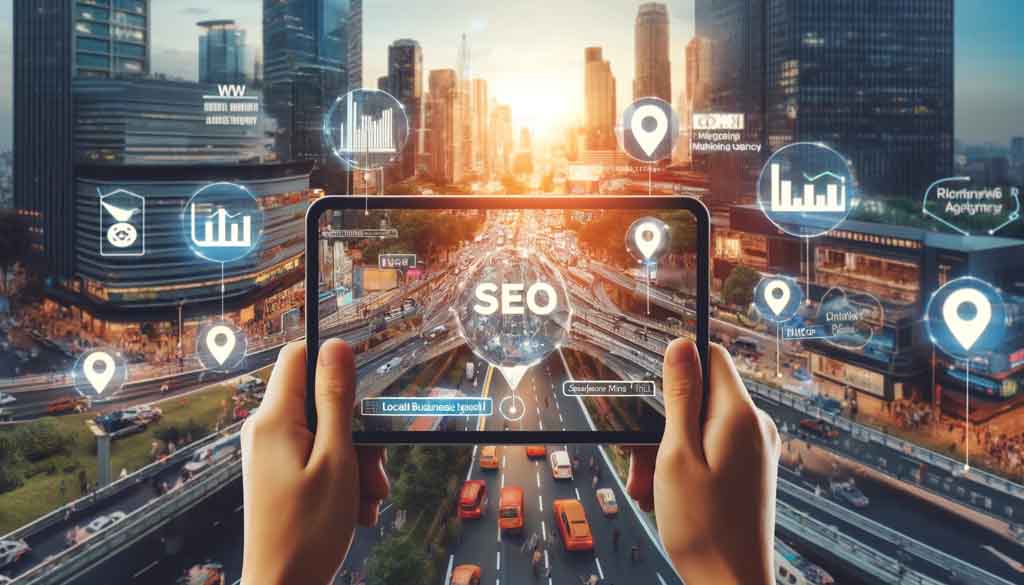
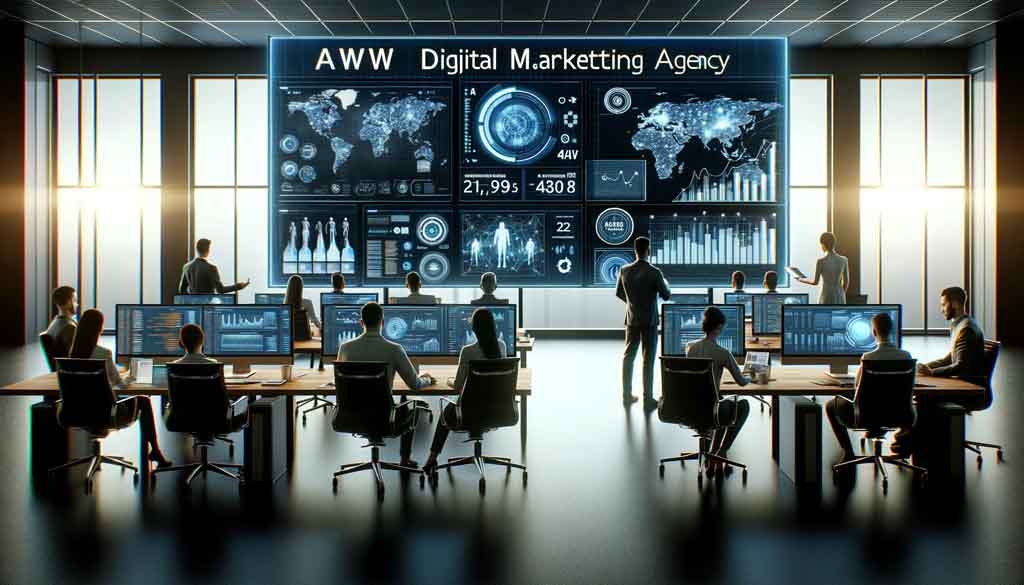
1. Advancements in Artificial Intelligence (AI)
Artificial Intelligence (AI) is revolutionizing the field of local SEO, propelling businesses towards more efficient, effective, and personalized marketing strategies. As we look towards 2024 and beyond, the integration of AI into local SEO processes is not just an innovation; it is becoming a necessity for staying competitive in a digitally driven market.
AI and Automation
AI’s role in automating SEO tasks cannot be overstated. Advanced algorithms and machine learning models are now capable of handling complex SEO activities that were traditionally labor-intensive and time-consuming. For instance, AI-powered tools can automatically generate content that is not only SEO-optimized but also tailored to local dialects and cultural nuances, increasing relevance and engagement with specific audiences.
Moreover, AI excels in comprehensive keyword research by analyzing vast amounts of data to predict which keywords will be most effective in driving local traffic. These tools are not limited to merely suggesting keywords; they can also provide insights into user intent, seasonal trends, and competitive landscapes, enabling businesses to craft more targeted and strategic SEO campaigns.
AI’s capability extends to SEO audits as well, where it can swiftly identify issues such as broken links, suboptimal keywords, or poor mobile optimization. These audits, powered by AI, are more thorough and faster, allowing businesses to quickly rectify SEO weaknesses and improve their search rankings.
Personalization
Perhaps the most transformative impact of AI in local SEO is its ability to personalize search results. AI algorithms analyze user behavior, location data, search histories, and even device types to deliver customized content that meets individual needs. For example, a user searching for coffee shops in their local area might receive suggestions based not only on proximity but also on their past preferences and reviews they’ve interacted with.
This level of personalization not only improves user experience but significantly boosts the likelihood of converting searches into sales, as offers and content are tailored to the preferences and behaviors of specific users. As we move into 2024, the ability for AI to segment audiences and tailor messages accordingly will become increasingly refined, providing an almost bespoke user experience that can dramatically enhance the effectiveness of local SEO campaigns.
In essence, as AI continues to evolve, its applications within local SEO are bound to expand, offering businesses unprecedented capabilities to optimize their digital presence efficiently. The adoption of AI in local SEO is not just about keeping up with technology but about leveraging these advancements to create more meaningful and successful interactions with local audiences.
2. Changes in Consumer Behavior
As we approach 2024, significant shifts in consumer behavior are influencing local SEO strategies. These changes are largely driven by technological advancements and the evolving preferences of consumers, demanding more intuitive and tailored digital experiences. Understanding these trends is crucial for businesses aiming to optimize their local search visibility and engagement.
Voice Search Proliferation
Voice search is becoming increasingly popular, with advancements in AI and natural language processing making digital assistants more reliable than ever. The convenience of voice commands has led to a surge in voice-activated searches, particularly for local information. According to a report by eMarketer, the number of voice assistant users is expected to grow to 122.7 million by 2021, indicating a significant shift towards voice-based interactions.
This trend necessitates a shift in SEO strategies towards more conversational, long-tail keywords that mirror natural speech patterns. For local businesses, this means optimizing for phrases that potential customers might use when speaking rather than typing. For example, instead of targeting “best pizza New York,” businesses might optimize for “Where can I find the best pizza in New York?” which aligns more closely with spoken queries.
Mobile-First Browsing
The dominance of mobile devices continues to shape local SEO. With over 60% of Google searches conducted on mobile devices, the importance of mobile-first design and optimization has never been more apparent. For local businesses, a mobile-friendly website is not just a recommendation; it is essential. This includes ensuring that sites are responsive, load quickly, and offer an intuitive user experience tailored for small screens.
Moreover, Google’s mobile-first indexing, which primarily uses the mobile version of a website’s content for ranking and indexing purposes, underscores the need for comprehensive mobile optimization strategies. Businesses not only need to ensure their content is accessible on mobile but also that it provides value and engagement to drive local traffic.
Augmented Reality (AR) in Local Searches
Augmented Reality (AR) is set to transform how consumers interact with local businesses. AR can overlay digital information on the real world, enhancing the way people discover and interact with local businesses. For instance, AR can enable potential customers to visualize restaurant menus in three-dimensional space or take virtual tours of a hotel or retail store before deciding to visit in person.
Businesses leveraging AR in their local SEO strategies can offer these immersive experiences directly from search results, significantly enhancing user engagement and satisfaction. This not only improves the likelihood of attracting local foot traffic but also sets a business apart as a forward-thinking entity that embraces innovative technologies.
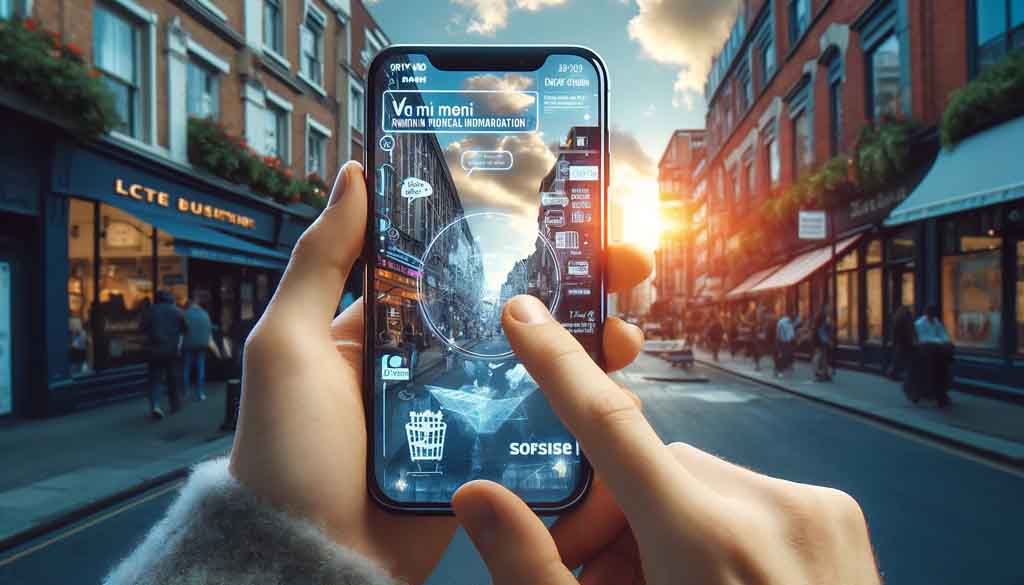
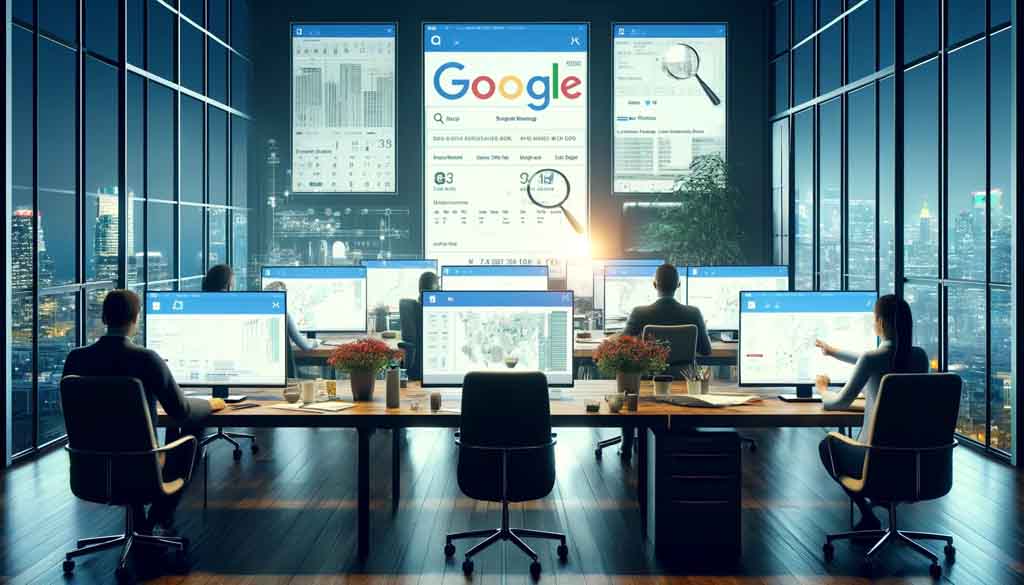
3. Search Engine Updates
As we move into 2024 and beyond, the landscape of local SEO continues to be shaped significantly by updates from major search engines, particularly Google. Staying abreast of these updates is essential for businesses looking to optimize their local search presence effectively.
Google’s Algorithm Updates
Google frequently updates its algorithms to improve the relevance and quality of search results. For local SEO, these updates often focus on enhancing the accuracy and usefulness of local search results. Speculation about future changes suggests a continued emphasis on relevance, user experience, and the integration of AI to better understand user intent. For instance, it is anticipated that Google might refine its algorithms to better differentiate between genuine, high-quality local content and content that tries to game the system through keyword stuffing or irrelevant backlinks.
A significant trend that could impact local SEO is the increasing incorporation of behavioral factors, such as how users interact with search results. Metrics like click-through rates, time spent on a page, and bounce rates might become more influential in determining local search rankings. This means businesses will need to focus not only on getting listed but also on engaging users effectively to improve their SEO standing.
Enhanced Local Search Features
Google Maps and Google My Business are critical tools for local SEO, and new features are continuously added to enhance their utility for businesses and users alike. Looking ahead, we can expect further enhancements that make these tools even more integral to local SEO strategies. For example, Google Maps might introduce more advanced features for customizing business profiles, such as the ability to showcase virtual tours of establishments or integrating real-time inventory levels which can help users see product availability at local stores without having to visit.
Another potential advancement is the enhancement of “Local Guides,” where Google could use AI to personalize recommendations even more sharply based on past user behavior, reviews, and interactions. This would not only help users find businesses that more closely match their preferences but also encourage businesses to engage actively with their customers online to influence these recommendations.
Moreover, Google My Business might see updates that allow for more direct interaction between businesses and customers. Features like real-time chat or improved integration with social media platforms could be introduced, providing businesses with more ways to connect with potential customers and improve their local visibility.
4. Rise of Hyperlocal Content
As we advance into 2024, the local SEO landscape is increasingly dominated by the rise of hyperlocal content. This trend focuses on creating highly targeted content that appeals directly to micro-communities or even specific neighborhoods. This approach not only boosts visibility in local search results but also significantly enhances engagement by resonating more deeply with the local audience’s needs and preferences.
Content Tailored to Micro-Communities
The crafting of content that specifically addresses the interests, culture, and issues of micro-communities is becoming a pivotal element of successful local SEO strategies. This could include blog posts about local events, news, or issues that are particularly pertinent to a small geographic area or community group. For example, a business in Brooklyn might create content that speaks directly to residents of Williamsburg, focusing on hyper-local issues or events that are unlikely to be covered by larger businesses targeting the entire New York City area.
Such localized content not only improves search engine rankings by aligning with local search terms but also builds a stronger connection with the audience. This approach can significantly enhance trust and loyalty, turning local residents into advocates for the brand. Additionally, this strategy leverages the power of local search algorithms that prioritize content relevance to the searcher’s location.
Geo-Specific Promotions and Offers
Businesses are increasingly using local SEO to promote geo-specific offers, which are special deals available only to customers within a particular geographical area. This strategy can be particularly effective around local holidays or events, where businesses can offer promotions tailored to these occasions. For instance, a restaurant could offer a special discount for anyone showing a ticket stub from a nearby theater, or a retail store might provide exclusive discounts during local festivals.
These localized promotions not only drive foot traffic but also improve local search rankings as they generate local buzz and encourage content sharing among residents. Additionally, such offers can be amplified through local directories, social media channels, and Google My Business posts, all of which contribute to enhanced local visibility.
The effectiveness of geo-specific promotions is also supported by data analytics that can track the influx of customers from specific promotions, allowing businesses to refine their offers and targeting over time to maximize returns.


5. Integration of Local SEO with Wider Marketing Efforts
As we move towards 2024, the integration of Local SEO with broader marketing efforts is becoming increasingly crucial for creating a cohesive and effective marketing strategy. This integration ensures that all channels work in harmony to maximize visibility and engagement, leveraging each platform’s strengths to boost local search rankings and attract more local customers.
Omnichannel Marketing
Omnichannel marketing involves creating a seamless user experience across all channels, including online and offline touchpoints. For local SEO, this means syncing your SEO efforts with social media, email marketing, and other digital marketing channels to ensure consistent messaging and branding. For instance, a local promotion advertised on social media can be reinforced through targeted SEO content and followed up with an email campaign, creating multiple touchpoints that enhance customer engagement and reinforce local brand presence.
Integrating local SEO into social media can involve using location-based hashtags, geotags, and local influencer partnerships to increase local visibility. Similarly, email marketing can be used to promote local-specific content or events to subscribers within a particular geographic area, driving both online traffic and physical foot traffic.
An excellent example of effective omnichannel marketing is when businesses use their social media platforms to direct users to their website, where SEO-optimized content helps to convert visits into sales. This strategy not only increases the effectiveness of each marketing channel but also significantly boosts local search rankings by generating consistent local signals across the web.
User Experience (UX) Optimization
The optimization of user experience (UX) on websites and other online platforms plays a critical role in the effectiveness of local SEO. A positive user experience leads to longer visit durations, lower bounce rates, and more interactions with your site—all of which are positive signals to search engines about the relevance and quality of your site to local searchers.
For local businesses, UX optimization includes ensuring that location-based information is easily accessible and that local content is prominently displayed. This could involve having a clear and intuitive navigation system on your website, fast loading times, and mobile-friendly designs that cater to the majority of users who access the internet via mobile devices.
Moreover, integrating local SEO with UX involves making sure that local reviews, maps, and contact information are not only present but optimized for user interaction. For example, clickable phone numbers, integrated maps for directions, and prominently featured customer testimonials can greatly enhance a user’s experience and likelihood to engage with a local business.
Enhancing UX for local SEO isn’t just about making a site easy to use; it’s about making it irresistible for local customers to choose your business over a competitor’s by providing an exceptionally smooth and personalized online experience.
6. Improvements in Data Analytics and Measurement
As we look towards 2024 and beyond, the evolution of data analytics and measurement tools is set to significantly enhance how businesses approach Local SEO. With the growing complexity and sophistication of digital marketing, the ability to accurately measure and predict the effectiveness of SEO strategies becomes paramount. This necessity drives the development and adoption of more advanced tools and techniques in data analytics, particularly in the realm of local SEO.
Predictive Analytics
Predictive analytics is emerging as a game-changer in the digital marketing space, especially for local SEO. By analyzing historical data and identifying patterns, predictive analytics tools can forecast future trends and behaviors, allowing businesses to anticipate market changes and consumer needs with greater accuracy. For local businesses, this could mean understanding seasonal fluctuations in search queries, predicting changes in consumer preferences, or foreseeing economic factors that could impact local search behaviors.
For instance, a restaurant might use predictive analytics to determine the most popular dishes during different times of the year and adjust their marketing content accordingly. Similarly, a retail store could predict peak shopping times and optimize their local SEO efforts to ensure maximum visibility during these periods.
These insights not only allow for more strategic planning but also enable businesses to allocate their resources more effectively, ensuring that they are targeting the right audiences at the right times with the right messages.
Better Measurement Tools
The advancement of measurement tools is crucial in quantifying the success of local SEO strategies. Modern tools are increasingly capable of providing granular insights into the performance of specific local SEO activities. For example, new technologies might offer deeper integration with local business systems, allowing for precise tracking of how online searches translate into in-store visits and purchases.
Emerging tools are also expected to improve the attribution of sales to specific local SEO efforts, helping businesses understand which parts of their strategy are working and which need refinement. This level of detail extends beyond traditional web analytics to include voice search analytics, location-based performance data, and user engagement metrics from various platforms.
Additionally, the integration of AI in these tools can enhance their ability to analyze vast amounts of data quickly, providing real-time insights that businesses can use to immediately adjust their strategies. This responsiveness is particularly valuable in the fast-paced world of local SEO, where being able to quickly adapt to local market conditions can make a significant difference in competitive advantage.

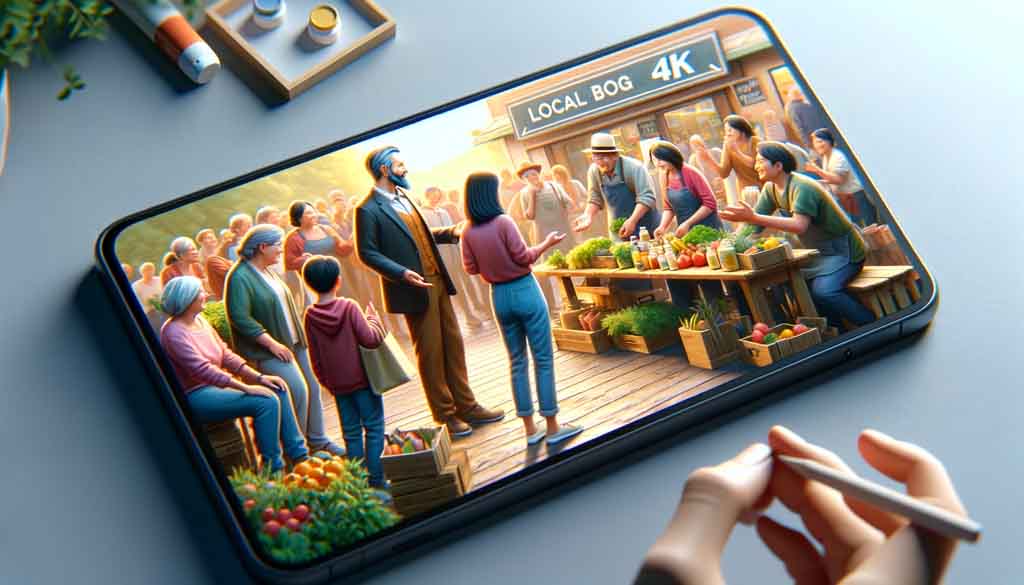
7. Ethical and Sustainable SEO Practices
As the digital landscape continues to evolve, ethical considerations and sustainability are becoming increasingly critical in the SEO industry, particularly for local SEO. In 2024 and beyond, businesses are expected to pay closer attention to these aspects not only to improve their community presence but also to build trust and credibility with their audience.
Focus on Sustainability
The concept of sustainability in SEO transcends environmental concerns, encompassing economic and social dimensions as well. Businesses are now expected to adopt practices that ensure they are part of a value-driven approach to marketing. This includes using sustainable web hosting services that utilize green energy sources, reducing digital carbon footprints by optimizing website code for efficiency, and ensuring that all marketing practices are transparent and ethical.
Moreover, data privacy is a significant part of sustainable SEO practices. With regulations like GDPR in Europe and similar laws being considered in other regions, including the United States, businesses must ensure that their SEO practices comply with data protection standards. This compliance is crucial not only for legal reasons but also for maintaining consumer trust. Transparent practices in how consumer data is collected, used, and protected can significantly enhance a brand’s reputation and its SEO results.
Community-Based SEO
Community-based SEO focuses on building relationships within the local community to boost local search rankings. This involves more than just optimizing for local keywords; it requires active engagement with local audiences through participation in community events, partnerships with other local businesses, and contributions to local causes.
For example, a business can sponsor local sports teams or charity events, which can generate goodwill and increase brand visibility locally. Collaborating with other local businesses on promotions or events can also provide mutual SEO benefits by sharing links and mentions on social media, which reinforces local relevance to search engines.
These activities not only improve local SEO through natural citations and backlinks but also strengthen community ties. By supporting and being actively involved in the community, businesses can create a loyal customer base that values their presence and contribution to the local environment.
Conclusion
As we have explored throughout this article, the landscape of local SEO in 2024 and beyond is dynamic and rapidly evolving, shaped by technological advancements, changing consumer behaviors, and the ever-present need for businesses to adapt to new market realities. The integration of artificial intelligence, the proliferation of voice search, the adoption of augmented reality, and the emphasis on ethical and sustainable practices are not just trends but are becoming fundamental components of successful local SEO strategies.
Summary of Key Points
- Artificial Intelligence: AI continues to transform local SEO through automation and personalization, making SEO practices more efficient and effective.
- Consumer Behavior: Shifts towards voice search and mobile-first browsing dictate that businesses must optimize their content to align with how consumers access information.
- Search Engine Updates: Keeping abreast of changes in search engine algorithms and features is crucial for maintaining and improving local search rankings.
- Hyperlocal Content: The focus on community-specific content and geo-specific promotions helps businesses engage more deeply with their local audiences.
- Omnichannel Marketing: Integrating local SEO with other digital marketing strategies ensures a unified and cohesive approach that enhances overall marketing effectiveness.
- Data Analytics and Measurement: Advances in tools and predictive analytics allow businesses to measure the impact of their SEO efforts more accurately and forecast future trends.
- Ethical and Sustainable Practices: Embracing sustainable and community-focused SEO practices not only improves local search performance but also builds trust and loyalty with consumers.
Encouragement for Businesses
In light of these developments, it is imperative for businesses to remain agile and proactive. The ability to quickly adapt to new SEO technologies, understand the latest consumer preferences, and apply insights from enhanced analytics will differentiate successful businesses from the rest. Staying informed about the latest trends and continuously refining your strategies are key to maintaining a competitive edge in local markets.
It is also important for businesses to commit to ethical practices and sustainability in their SEO strategies. This commitment not only aligns with global movements towards environmental consciousness and data privacy but also resonates strongly with today’s consumers, who increasingly favor businesses that demonstrate responsibility and integrity.
As we look to the future, the potential for local SEO to drive business success is immense, but it requires a dedicated approach to understanding and implementing these complex, evolving strategies. Businesses that can navigate this landscape with a focus on adaptability, ethical practices, and community engagement will be well-positioned to thrive in the competitive market of 2024 and beyond.
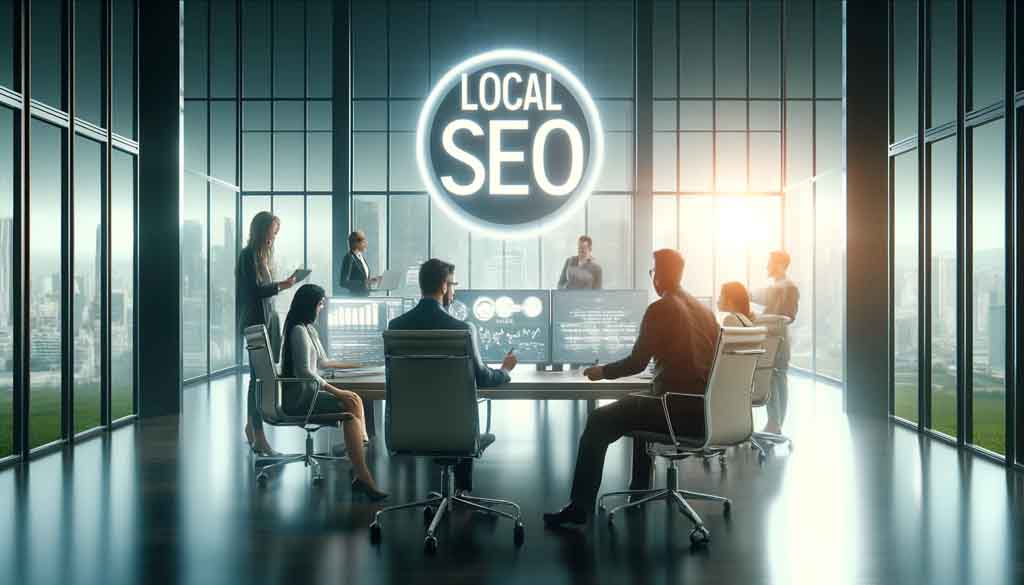

As we navigate the shifting landscapes of local SEO and digital marketing, staying informed is not just an advantage—it’s a necessity. In the rapidly evolving digital world, understanding the latest trends, techniques, and technologies can make the difference between thriving and merely surviving. This article has explored some of the critical advancements and changes expected in local SEO for 2024 and beyond, providing insights that could shape your strategic approaches and decision-making processes.
Now, we invite you to take a proactive step towards mastering these evolving dynamics by subscribing to our updates. By joining our community, you’ll receive regular insights and updates directly to your inbox, helping you stay ahead of the curve in SEO and digital marketing. Whether you’re a business owner seeking to enhance your local visibility, a marketer aiming to refine your strategies, or simply a curious reader passionate about digital trends, our content is designed to equip you with the knowledge and tools you need to succeed.
Don’t miss out on the opportunity to lead in your market. Subscribe today and turn insights into action. Stay ahead of the game with timely updates, expert tips, and in-depth analyses tailored to help you leverage the power of local SEO and embrace the digital marketing innovations of tomorrow.

